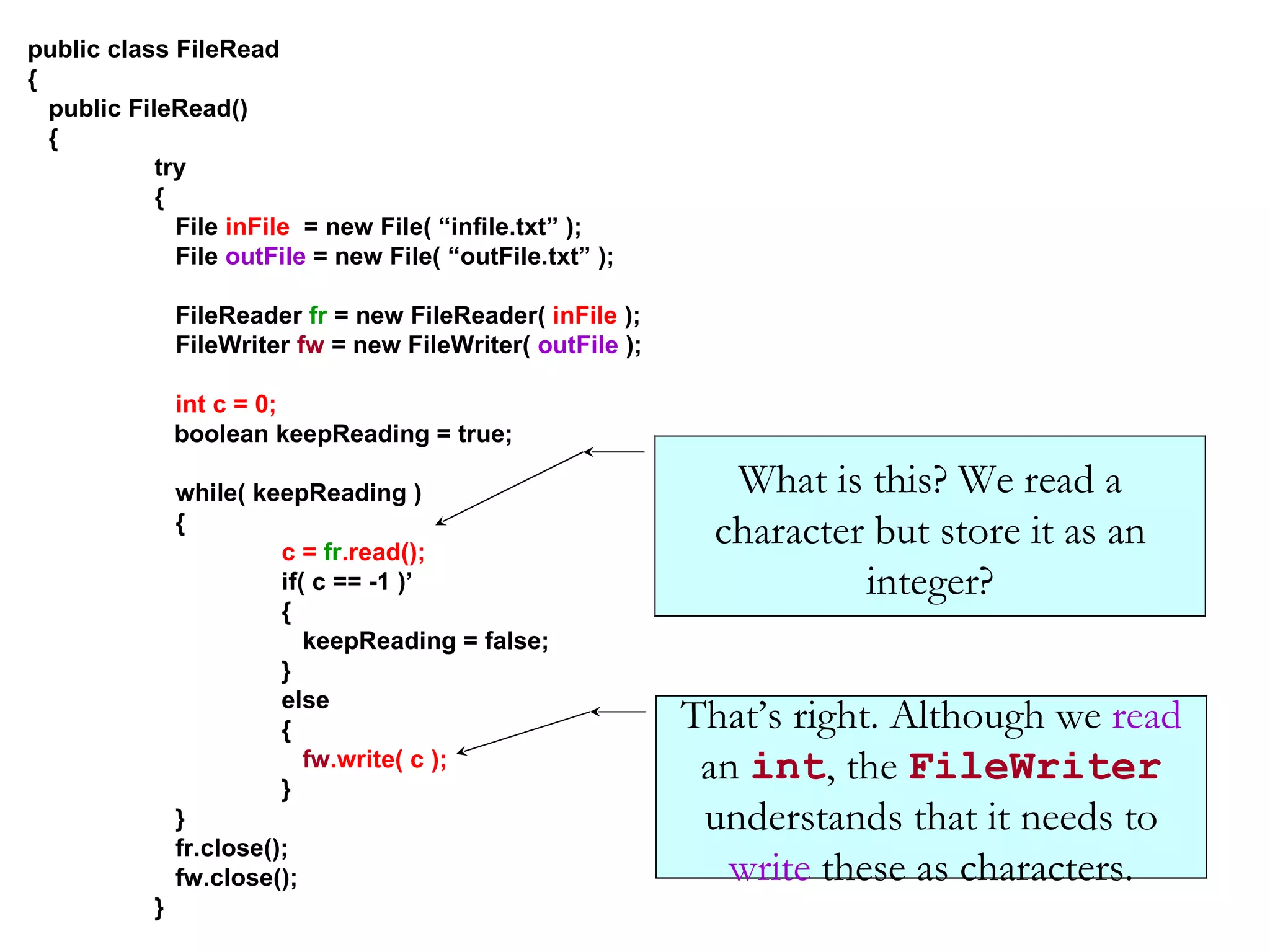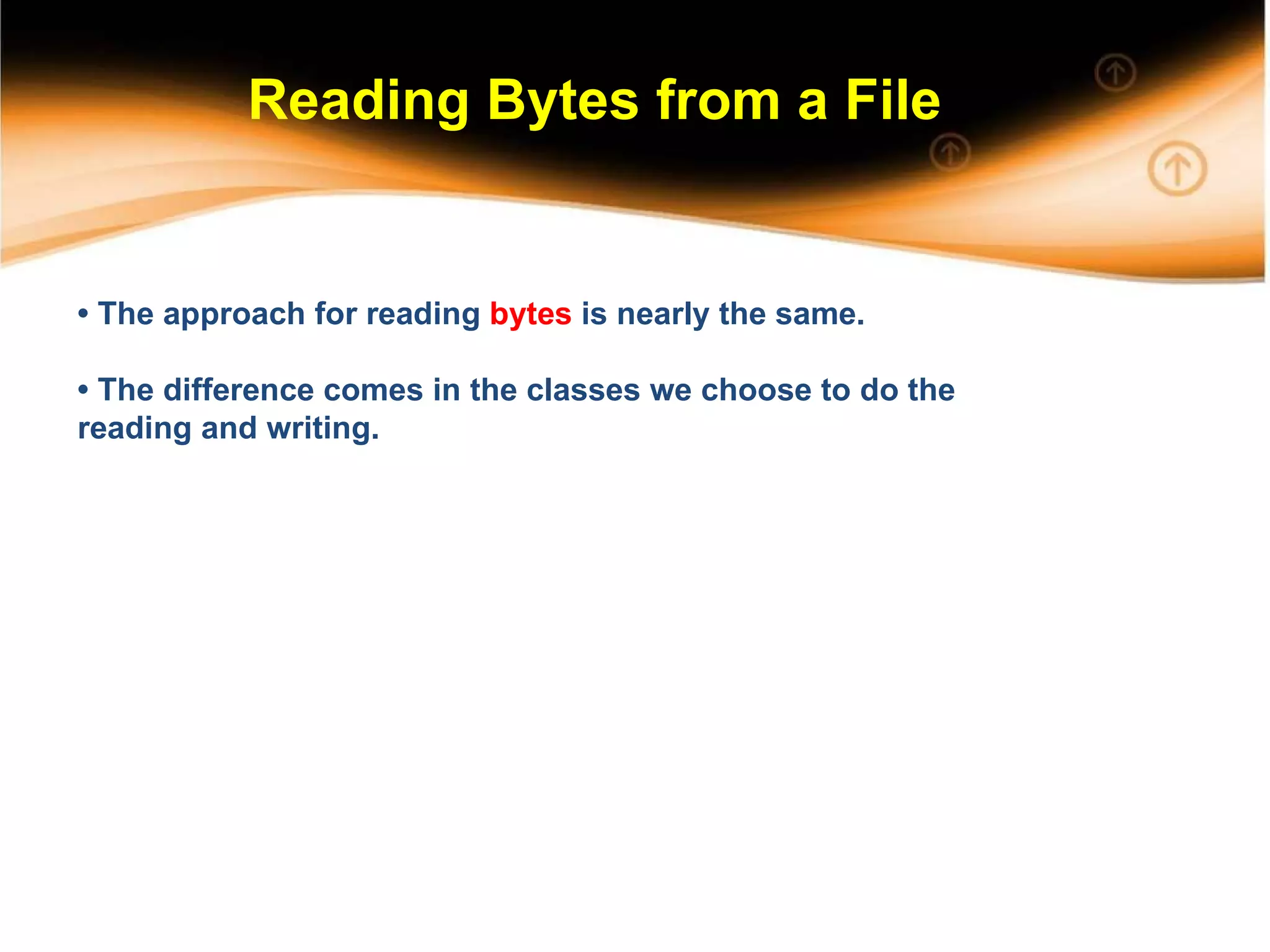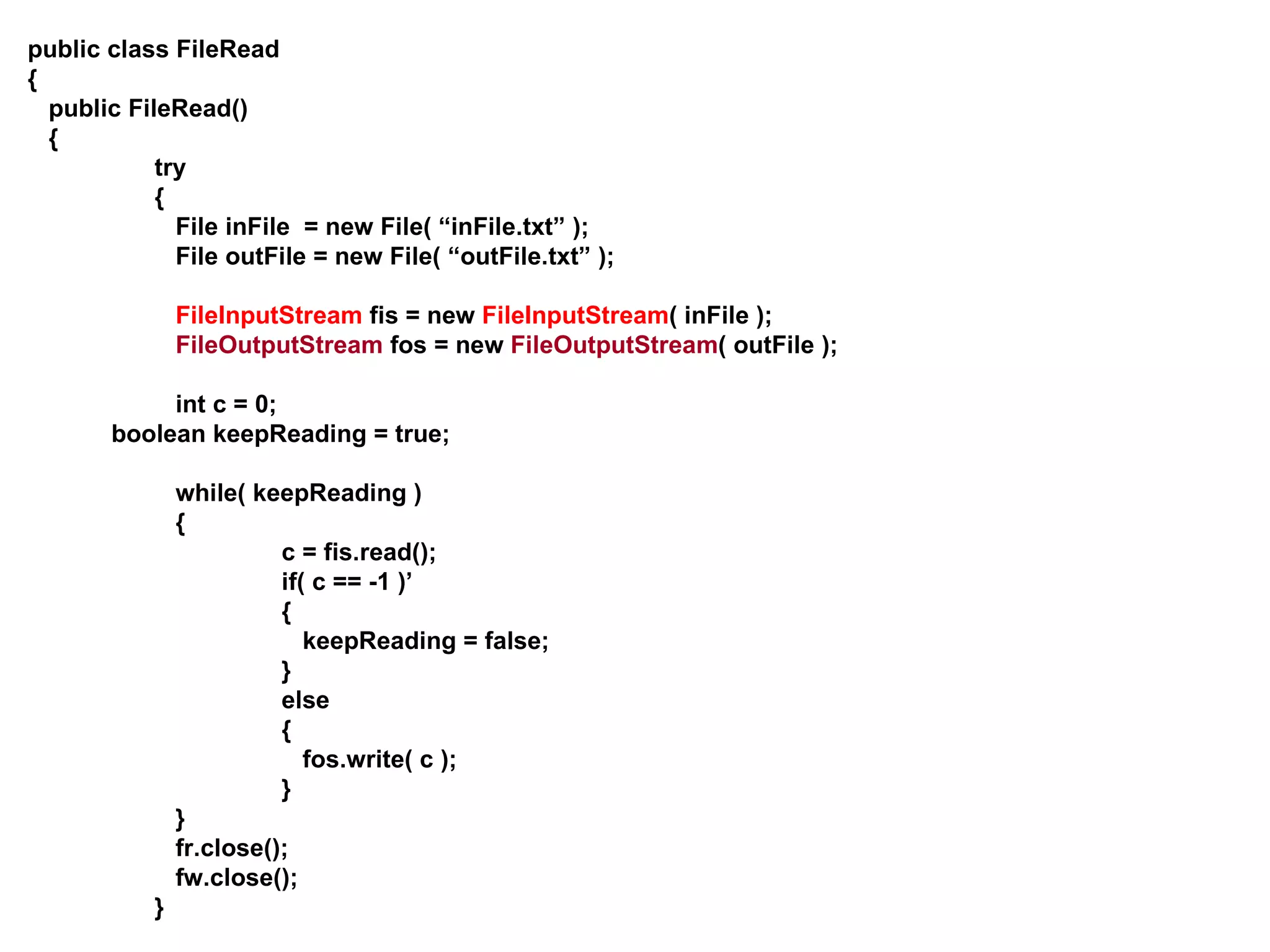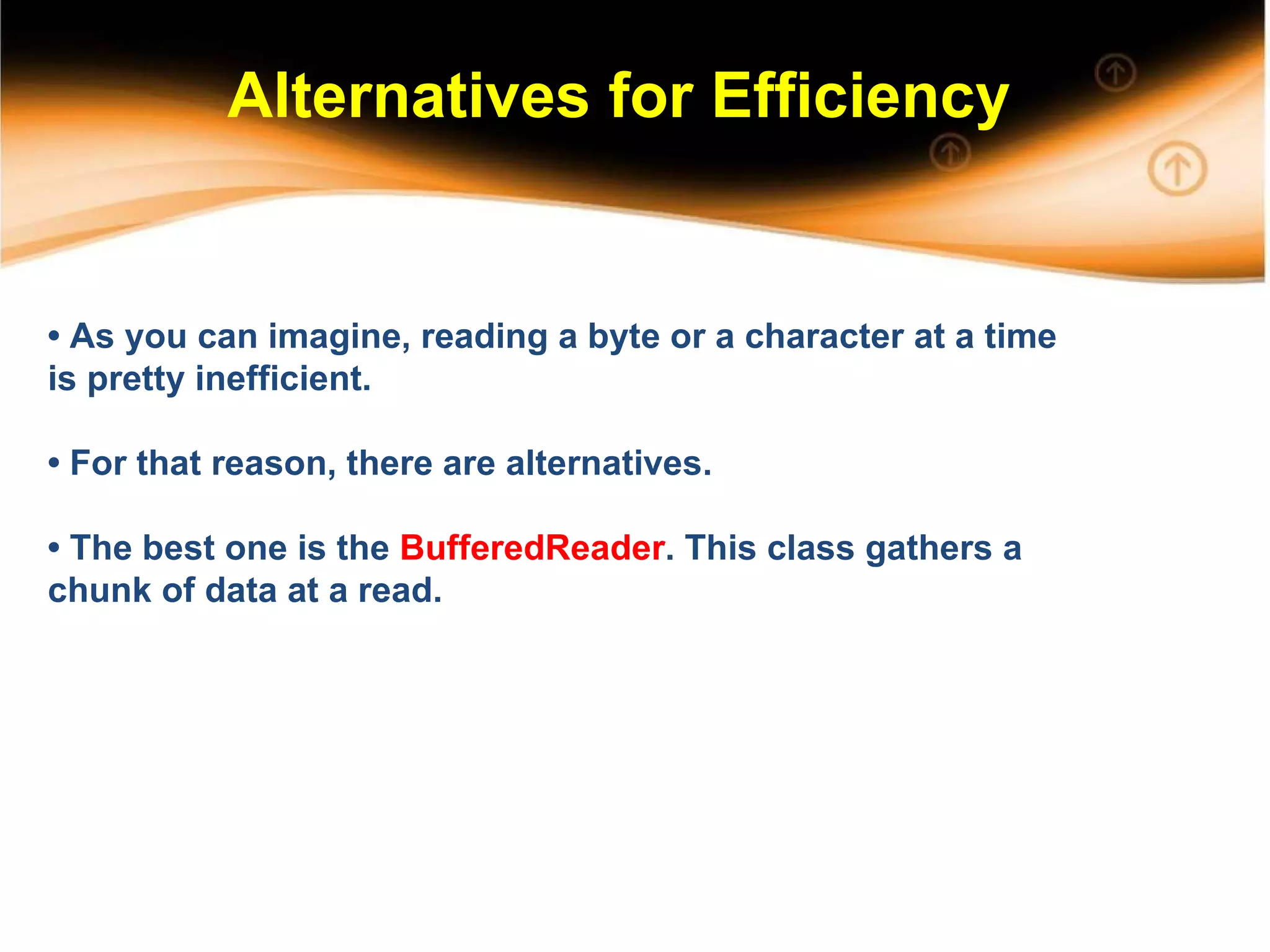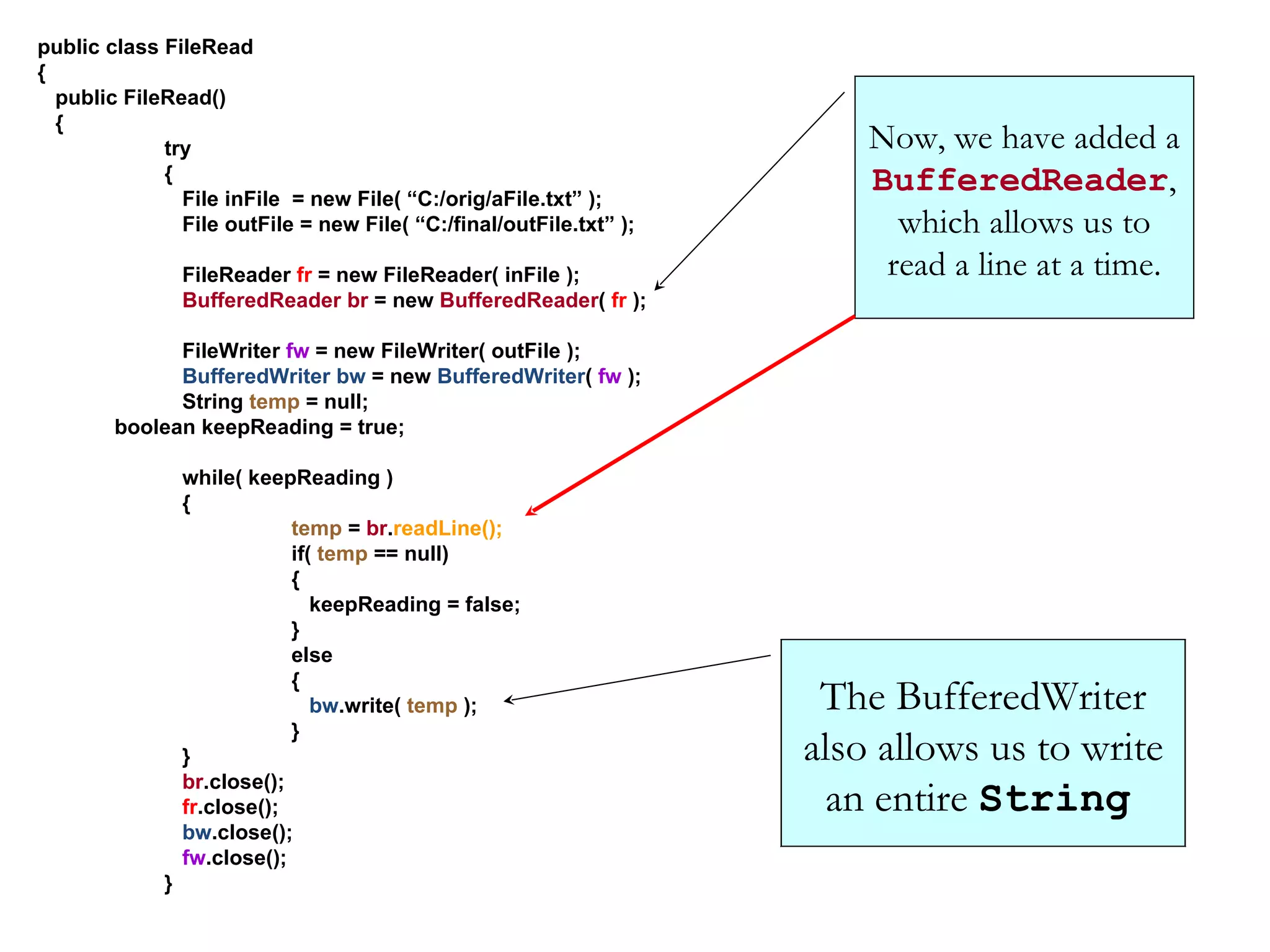The document discusses files, streams, and different classes in Java for reading and writing files and streams. It explains that files exist on a local file system while streams represent a flow of characters. It also discusses the process of opening, reading from, and closing files, as well as using classes like FileReader, FileWriter, FileInputStream and FileOutputStream for reading/writing characters and bytes. It recommends using BufferedReader and BufferedWriter for more efficient reading of lines and writing of strings.
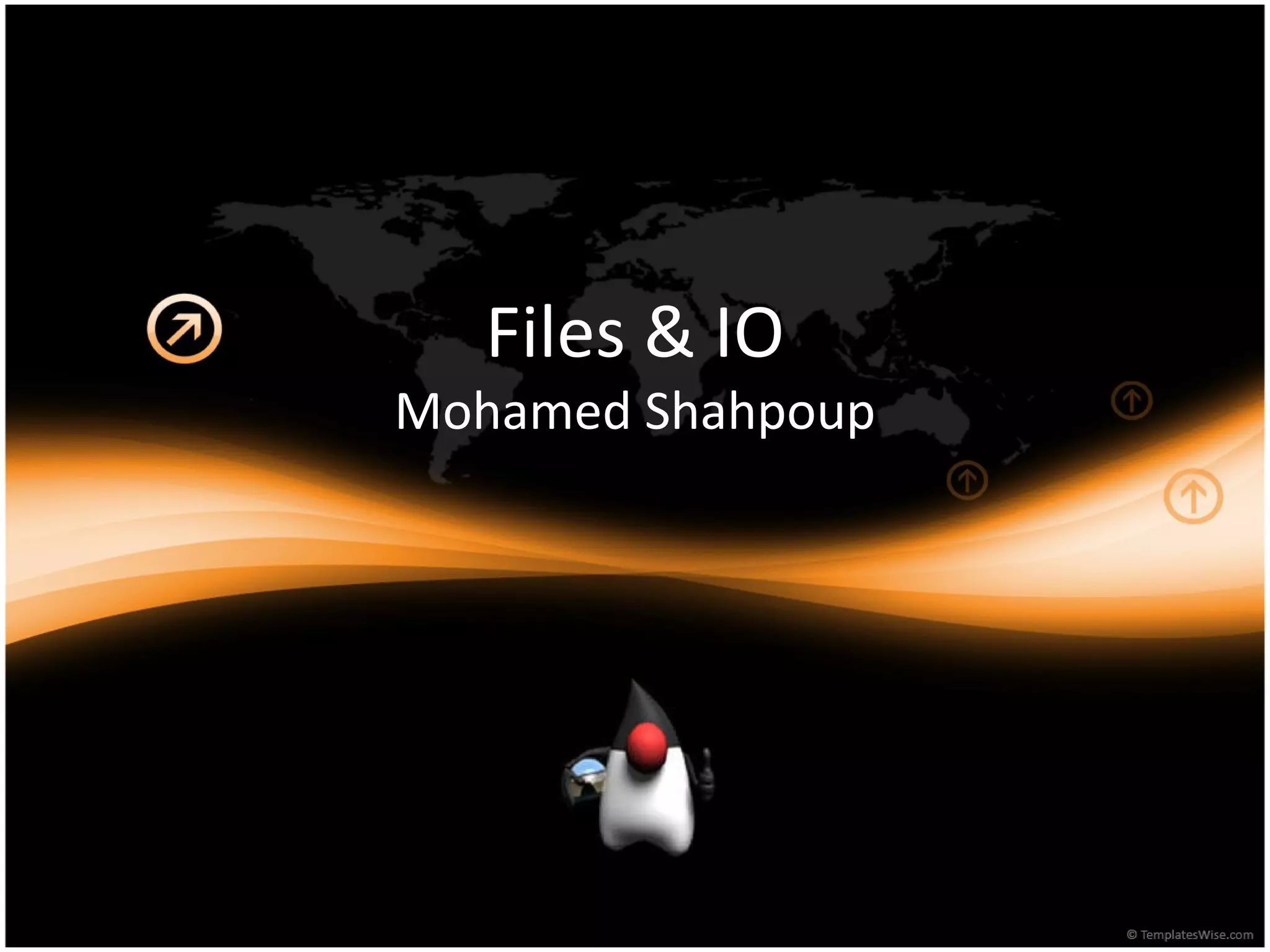
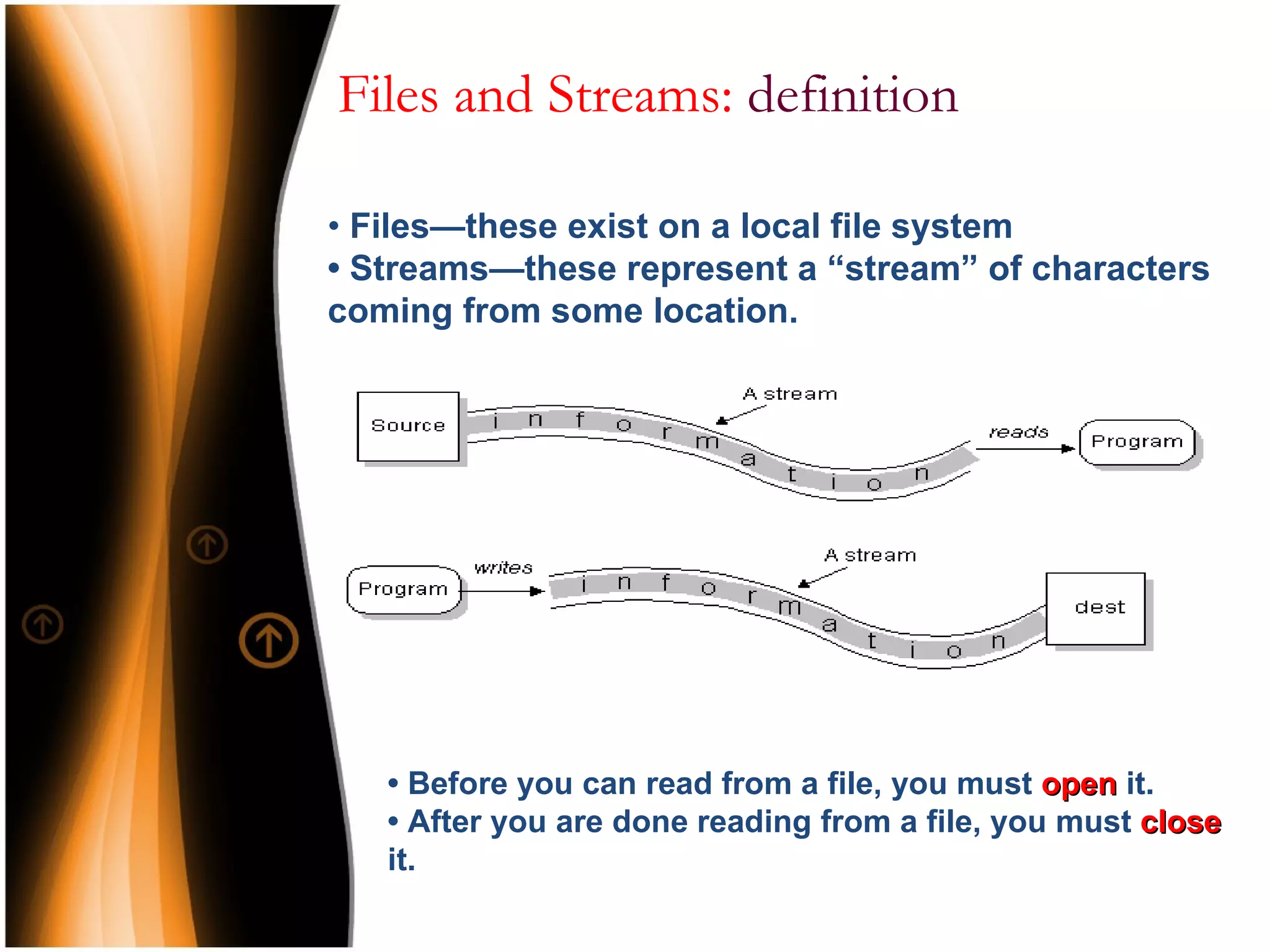
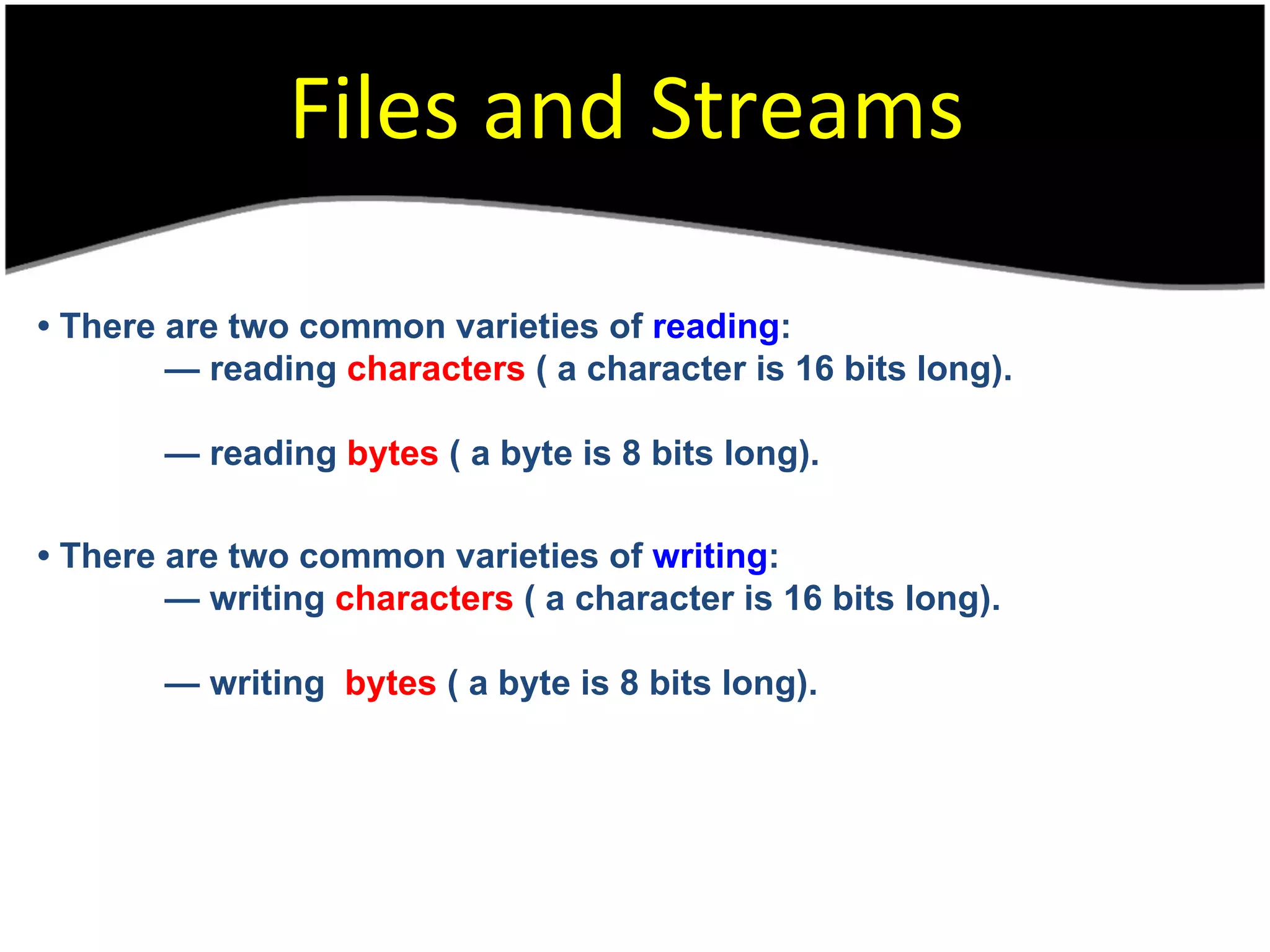
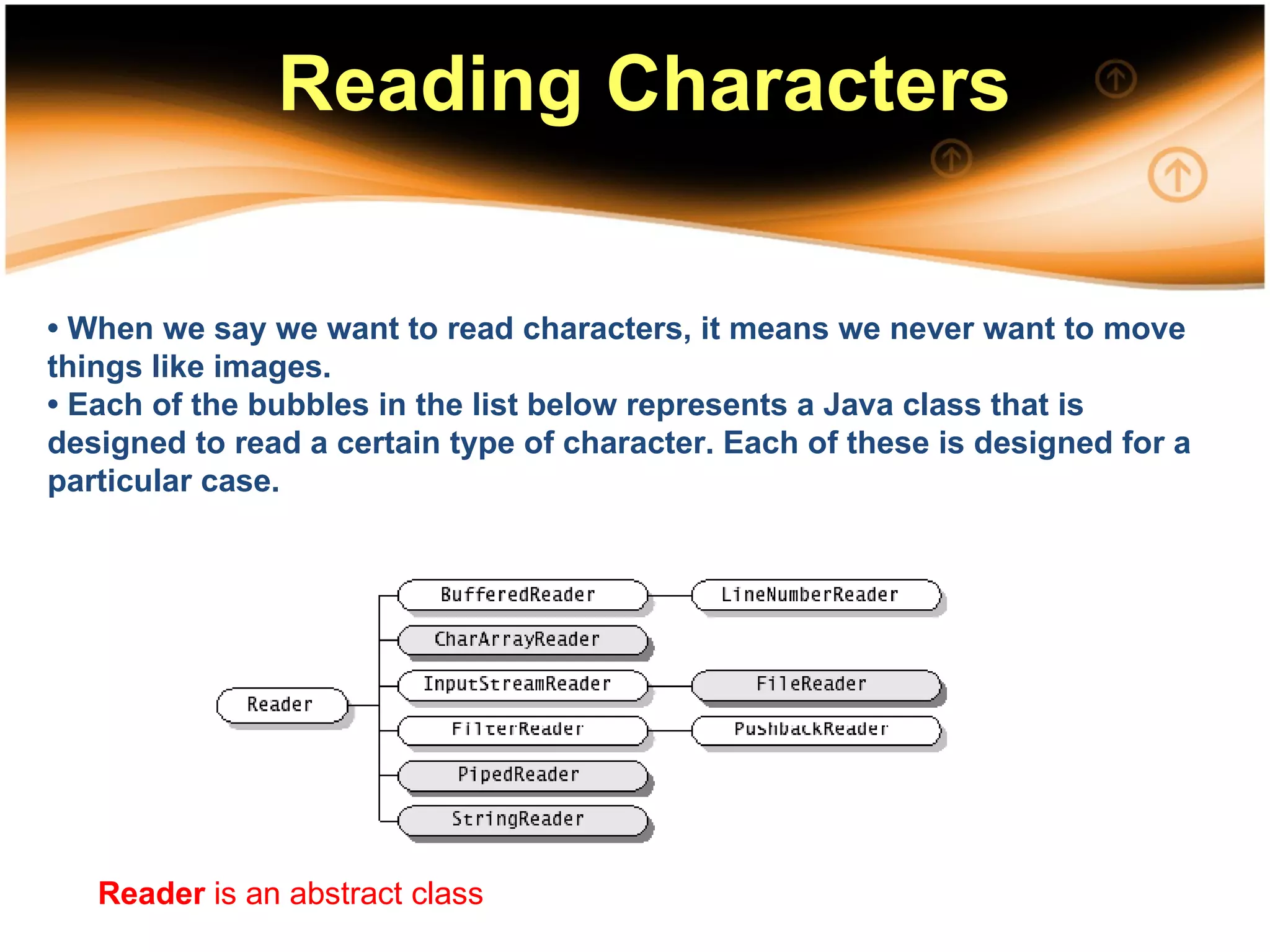
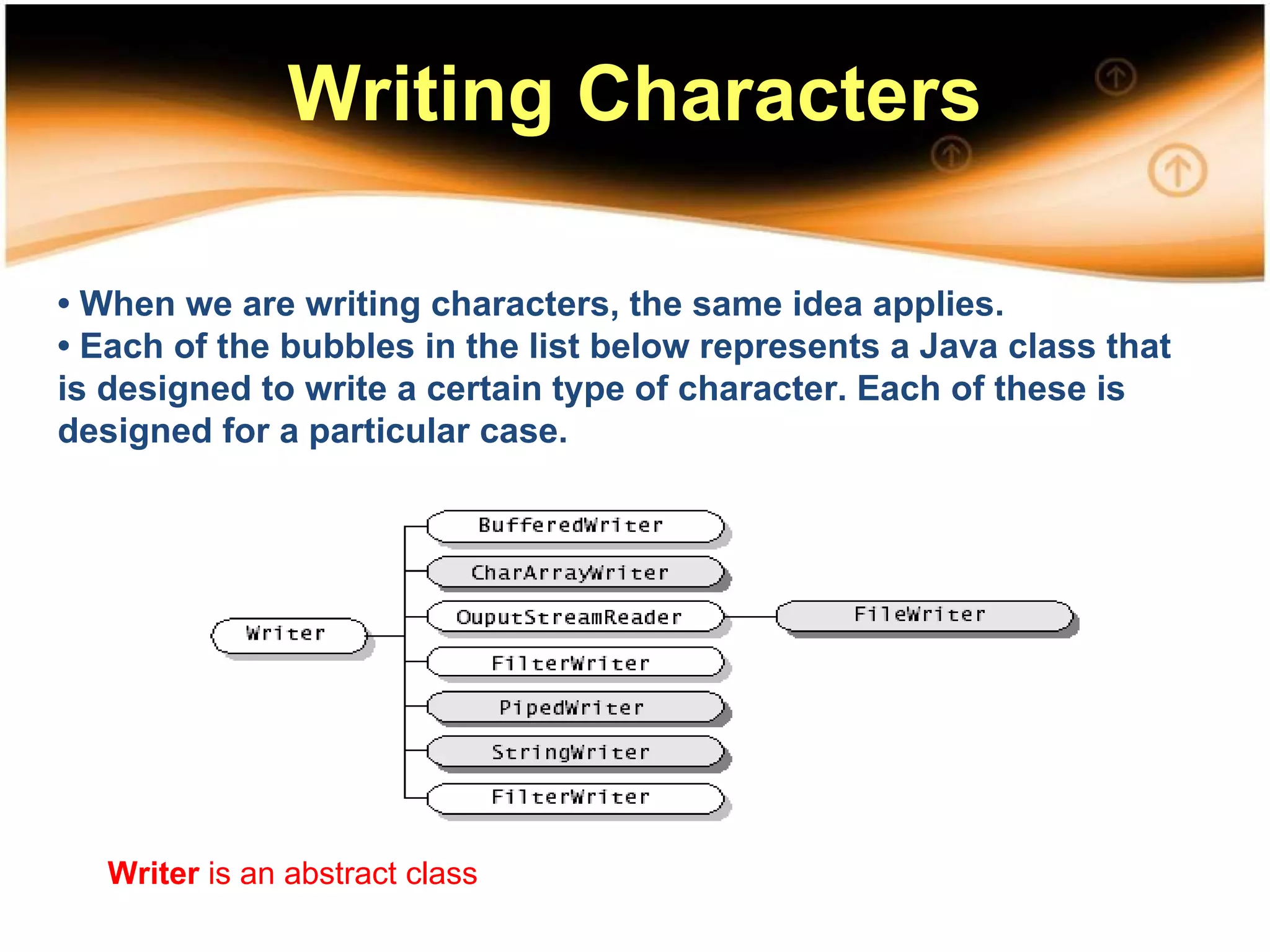
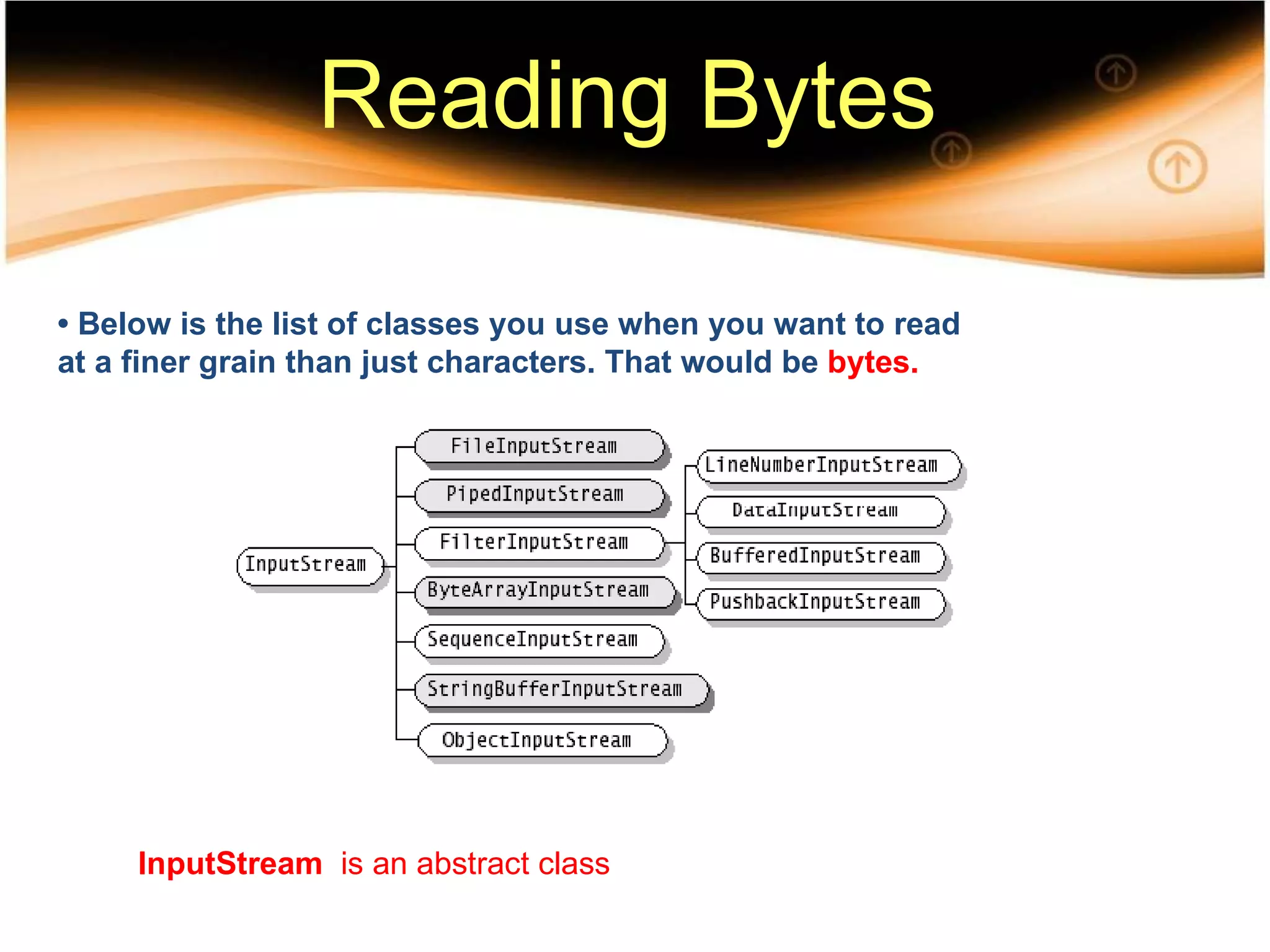
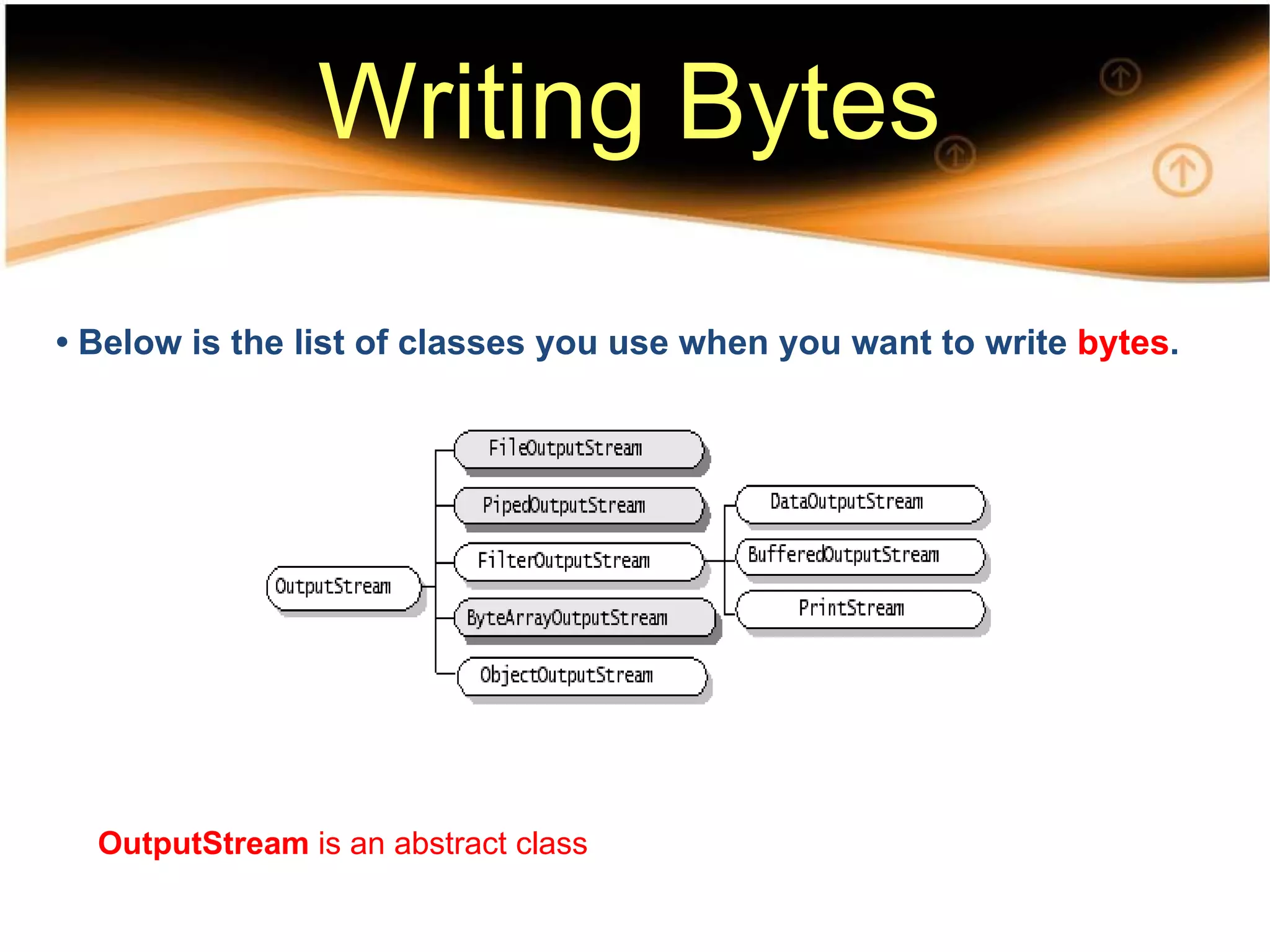
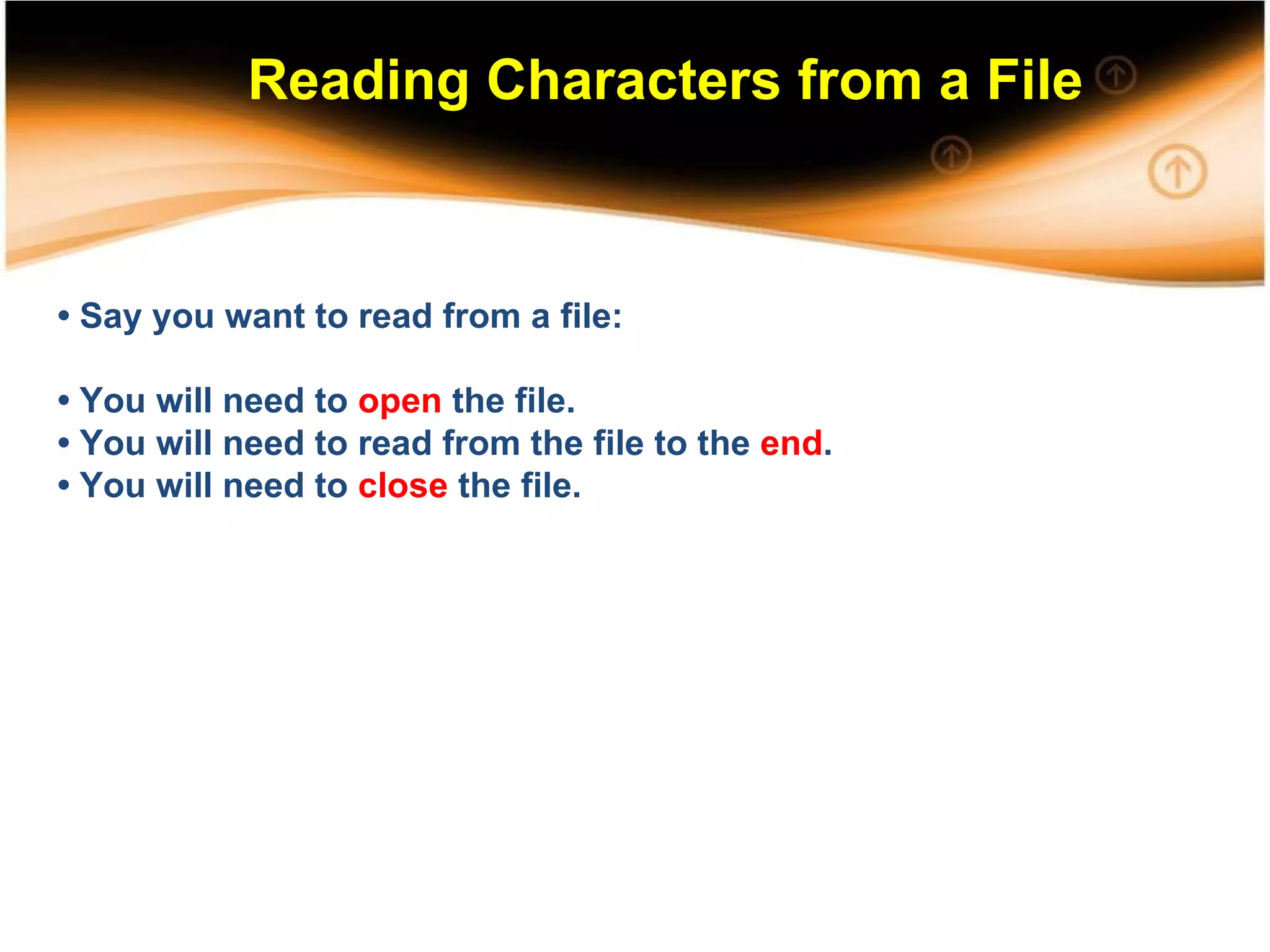
![• First of all, what is a file ? • A file is an instance of the class File import java.io; public class FileRead { public FileRead() { File inFile = new File( “Gavin King.txt” ); } public static void main( String[] args ) { FileRead fr = new FileRead(); } } Reading Characters from a File All the classes used in I/O come from this package.](https://image.slidesharecdn.com/filesandio-100704215707-phpapp02/75/Files-IO-in-Java-9-2048.jpg)
![import java.io; public class FileRead { public FileRead() { try { File inFile = new File( “Gavin King.txt” ); } catch( IOException io ) { System.out.println( “IOException, io=“ + io ); } } public static void main( String[] args ) { FileRead fr = new FileRead(); } Because the constructor on File throws an IOException, we are forced to place it in a try-catch block Reading Characters from a File](https://image.slidesharecdn.com/filesandio-100704215707-phpapp02/75/Files-IO-in-Java-10-2048.jpg)
